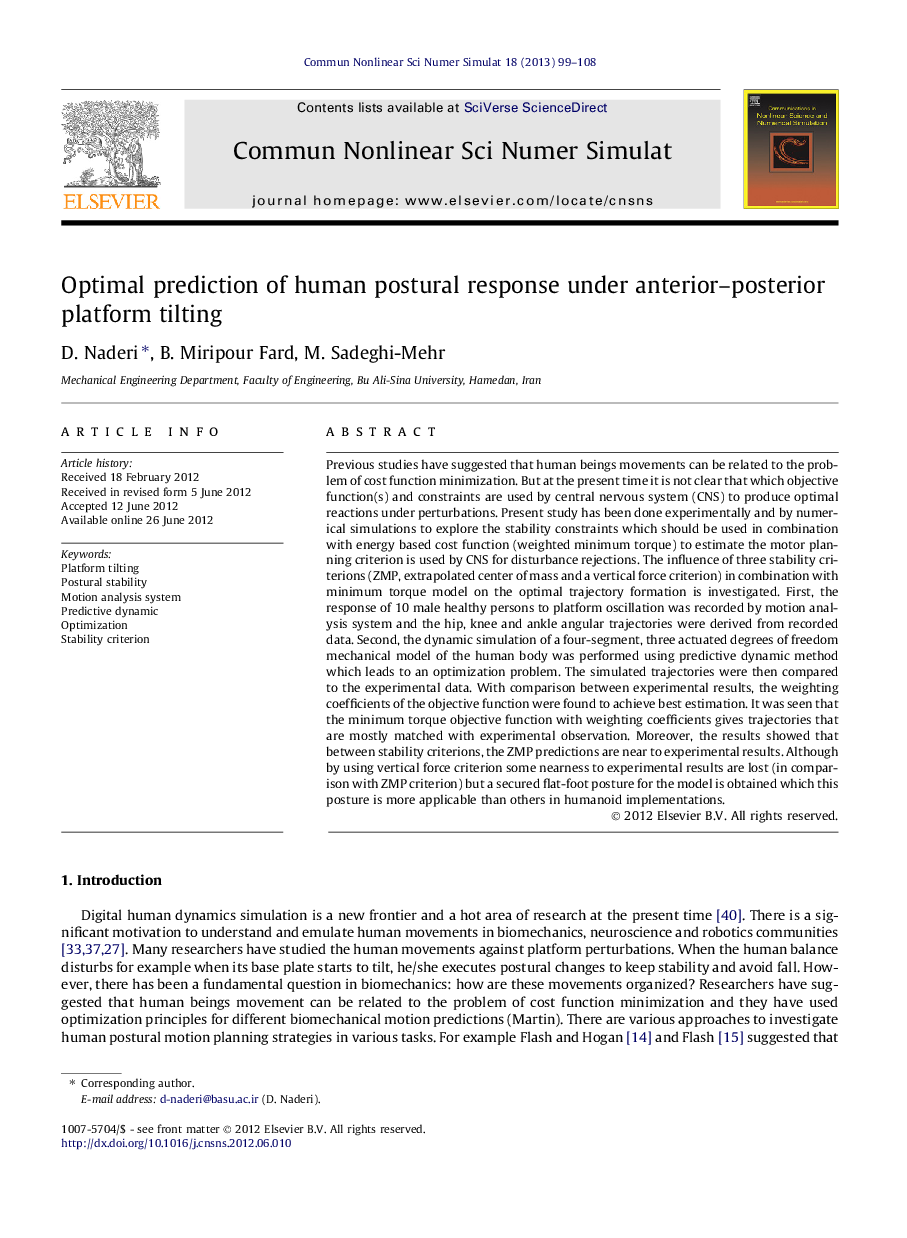| کد مقاله | کد نشریه | سال انتشار | مقاله انگلیسی | نسخه تمام متن |
|---|---|---|---|---|
| 766941 | 897135 | 2013 | 10 صفحه PDF | دانلود رایگان |

Previous studies have suggested that human beings movements can be related to the problem of cost function minimization. But at the present time it is not clear that which objective function(s) and constraints are used by central nervous system (CNS) to produce optimal reactions under perturbations. Present study has been done experimentally and by numerical simulations to explore the stability constraints which should be used in combination with energy based cost function (weighted minimum torque) to estimate the motor planning criterion is used by CNS for disturbance rejections. The influence of three stability criterions (ZMP, extrapolated center of mass and a vertical force criterion) in combination with minimum torque model on the optimal trajectory formation is investigated. First, the response of 10 male healthy persons to platform oscillation was recorded by motion analysis system and the hip, knee and ankle angular trajectories were derived from recorded data. Second, the dynamic simulation of a four-segment, three actuated degrees of freedom mechanical model of the human body was performed using predictive dynamic method which leads to an optimization problem. The simulated trajectories were then compared to the experimental data. With comparison between experimental results, the weighting coefficients of the objective function were found to achieve best estimation. It was seen that the minimum torque objective function with weighting coefficients gives trajectories that are mostly matched with experimental observation. Moreover, the results showed that between stability criterions, the ZMP predictions are near to experimental results. Although by using vertical force criterion some nearness to experimental results are lost (in comparison with ZMP criterion) but a secured flat-foot posture for the model is obtained which this posture is more applicable than others in humanoid implementations.
► Human postural response.
► Human stability constraints.
► Experimental and by numerical simulations.
► Energy based cost function (weighted minimum torque).
► Optimization.
Journal: Communications in Nonlinear Science and Numerical Simulation - Volume 18, Issue 1, January 2013, Pages 99–108